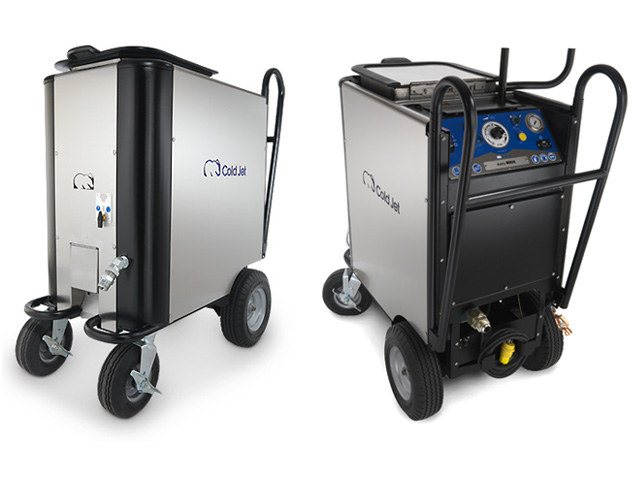Weld Slag and Spatter Removal
Why is it necessary to remove Weld Slag?
Product
Many products are constructed from a series of stamped and formed panels that are spot-welded together making a uni-body frame. The spot welding is done on an automated line using robotic welders.
Application
Cleaning of the automated production equipment: An epoxy sealer is applied between the panels before they are spot welded. This sealer is splattered along with welding slag during the welding process. After a period of time, this "spatter" builds up on the robot joints and other ancillary equipment. It can become difficult to perform regular maintnenance on the equipment and the range of motion of the robot will be reduced. The production line may need to be shut down to remedy problems caused by this excess accumulation of slag and sealant.
As auto frames pass through welding lines they can catch on this slag build-up, robots apply sealant in the wrong locations and weld quality is therefore impaired. During preventative maintenance, skilled electricians and mechanics spend a disproportionate amount of time cleaning troubled areas rather than focusing on items requiring repair/maintenance. E-coat is another problem area whereby epoxy coating builds up and affects the effectiveness of holding clamps and contact shoes.
Problem
Traditional cleaning methods tend to damage the delicate sensors and electrical devices in the area. Manual scraping and wiping doesn't clean very effectively and it is very time consuming.
Solution
Cold Jet dry ice blasting yields a much cleaner end product without causing any damage to the equipment. Cold Jet's rate of cleaning is very good in this application and studies have proven that downtime for the line is significantly reduced. Indeed, the entire weld line may be cleaned during a scheduled maintenance shutdown. Cold Jet Dry Ice blasting creates a “No Contact Cleaning” opportunity and can remove slag and spatter in a fraction of time. Most companies contract this job out to a maintenance contractor. A flexible and robust dry ice blast system is required to handle this job. Cold Jet has an expansive product line that is suitable for this application.
Both the manufacturer and contractor have several compelling economic reasons to use the Cold Jet process over conventional cleaning methods.
Manufacturer:
- Increased line up-time from the ability to spot problems, and if a break down occurs, problems are able to be fixed quickly without having to first clean the troubled area.
- Robots and jigs are aesthetically better looking, the copper and brass fittings which become all nicked up from chiseling and scraping maintain a like new appearance when cleaned with Cold Jet.
Contractor:
- With Cold Jet contractors are able to clean proximity switches and tight hard to reach by hand areas. For example the guns and arms of the robot.
- Solvents used for cleaning the sealant are eliminated.
- Contractors can now clean between shifts versus only being able to clean on weekends and during shutdown periods.
- Laborers prefer using Cold Jet over hand cleaning resulting in improved employee moral.




